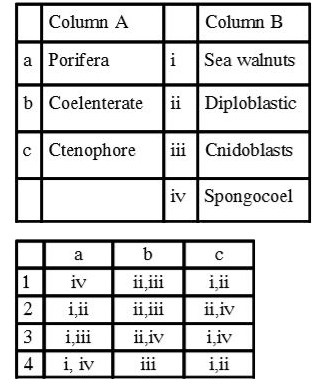The methods NOT involved in concentration of ore are
A.Liquid
B.Leaching
C.Electrolysis
D.Hydroallic washing
E.Froth floatation
Choose the correct answer from the options given below:
B,D and E only
C,D and E only
A and C only
B,D and C only
The correct Answer is:C
To solve the question regarding the methods NOT involved in the concentration of ore, we will analyze each option provided:
1. Liquid: This option seems to refer to "liquefaction," which is not a method of concentrating ore. Instead, it is a process related to refining or separating materials based on their liquid state. Therefore, this method is NOT involved in the concentration of ore.
2. Leaching: This is a method used in the concentration of ores, particularly for metals like gold and silver. In leaching, a solvent is used to dissolve the desired minerals from the ore. Thus, leaching is involved in the concentration of ore.
3. Electrolysis: This method is primarily used for the extraction of metals, especially those with high reactivity, such as sodium and aluminum. Electrolysis is not a method for concentrating ore but rather for refining and extracting metals from their ores. Therefore, this method is NOT involved in the concentration of ore.
4. Hydraulic washing: This method involves using a stream of water to separate impurities based on density differences. It is a common technique for concentrating ores, particularly in the case of heavy minerals. Thus, hydraulic washing is involved in the concentration of ore.
5. Froth flotation: This is a widely used method for concentrating sulfide ores. It works on the principle of differences in surface properties of the minerals. Froth flotation is indeed a method of concentrating ore.
Based on the analysis, the methods NOT involved in the concentration of ore are:
Answer: A (Liquid) and C (Electrolysis)
Topper's Solved these Questions
Similar Questions
Knowledge Check
- Question 1 - Select One
Match the columns and choose the correct answer from the options given below
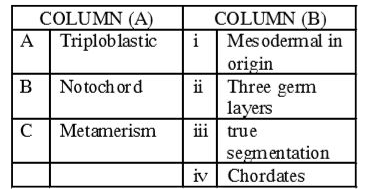 AA -ii, B-iii, C-ivBA-i, B-iii, C-ivCA -ii, B-iv & i, C-iiiDA-iii, B-ii, C-i
AA -ii, B-iii, C-ivBA-i, B-iii, C-ivCA -ii, B-iv & i, C-iiiDA-iii, B-ii, C-i - Question 2 - Select One
Match List I with List II.
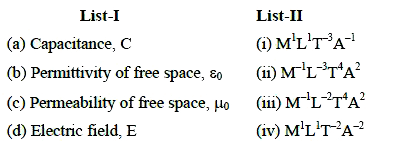
Choose the correct answer from the options given belowA(a) → (iii), (b) → (ii), (c ) → (iv), (d) → (i)B(a) → (iii), (b) → (iv), (c ) → (ii), (d) → (i)C(a) → (iv), (b) → (ii), (c ) → (iii), (d) → (i)D(a) → (iv), (b) → (iii), (c ) → (ii), (d) → (i)
Match the columns and choose the correct answer from the options given below
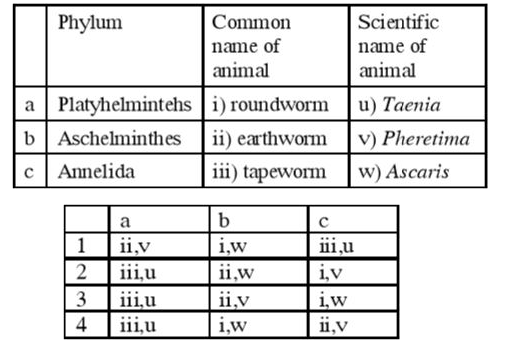 View Solution
View SolutionMatch the columns and choose the correct answer from the options given below
 View Solution
View SolutionMatch the columns and choose the correct answer from the options given below
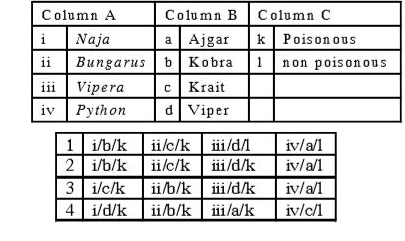 View Solution
View SolutionMatch List I with List II.
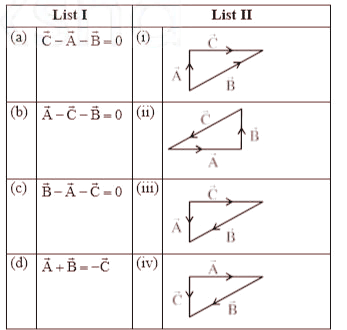
Choose the correct answer from the options given below :View SolutionMatch List I with List II.
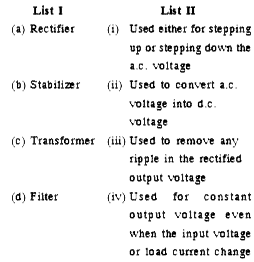
Choose the correct answer from the options given below :View SolutionMatch the following columns and choose the correct answer from the options given below
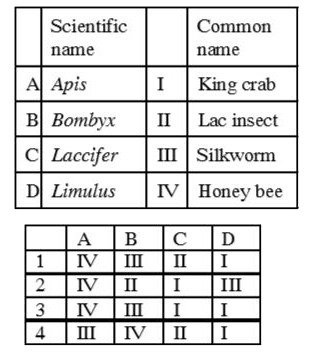 View Solution
View Solution


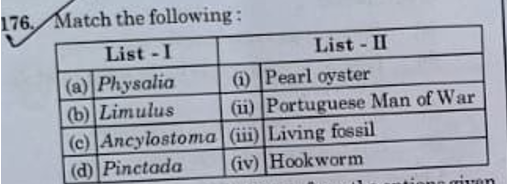 Choose the correct answer from options given below
Choose the correct answer from options given below